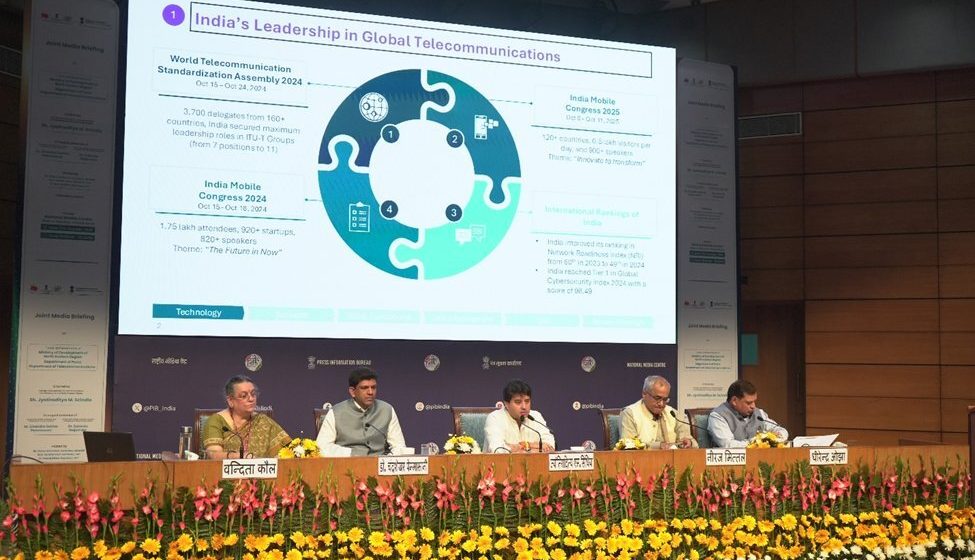Scindia also says India is sharpening its telecom service standards in step with its digital security ambitions.
India’s indigenously developed digital security systems are playing a pivotal role in protecting citizens from spoof calls and financial fraud, Jyotiraditya Scindia, Union Minister for Communications and Minister for Development of North Eastern Region, said on Friday.
“The Sanchar Saathi portal has received over 200 million hits. Our Spoof Call Prevention System was previously blocking up to 13.5 million international spoof calls per day. Now that spoofers recognise we have put a firewall in place, that number has dropped by nearly 97 per cent,” Scindia said.
He added that ASTR has disconnected 8.2 million spurious mobile connections, while the FFRI—developed by the Department of Telecommunications—has been a “runaway success.” Both the Reserve Bank of India and Google have mandated the adoption of the tool. As a result, 350,000 mobile numbers have been placed under restriction and 1 million accounts frozen.
“Altogether, we have saved approximately ₹2 billion of citizens’ money,” Scindia said.
He also highlighted the scale of collaboration under the Digital Intelligence Platform (DIP), which now includes 750 agencies—governmental and non-governmental—such as the Ministry of Home Affairs, 36 states and union territories, and nearly 500 banks and financial institutions. The platform enables real-time sharing of digital intelligence to prevent cybercrime and financial fraud.
Tighter Service Standards
Scindia said the government was also working to tighten Quality of Service (QoS) standards to further enhance India’s telecom services.
“The customer is our identity, the customer is our benchmark, and the customer is our priority. It is our duty to ensure that customers get good service.”
The Department of Telecommunications (DoT) and Telecom Regulatory Authority of India (TRAI) are jointly driving reforms. Telecom operators have been instructed to map every tower on their websites so customers can view tower locations and radiation sources. Operators have also been asked to shift from tower-level signal measurement to cell-level granularity.
“In addition, we have introduced new metrics for assessing QoS, such as packet drop rates and other indicators that were previously not tracked,” Scindia said.
Previously, telcos submitted performance data quarterly. TRAI has now mandated monthly reporting. Since October 1, progress has been tracked across four key benchmarks. Cumulative downtime, which was under 2 per cent, is targeted to fall below 1 per cent. Call drop rates must remain under 2 per cent, while uplink and downlink packet drop rates are also expected to stay below that threshold.
Latency, which previously stood at 250 milliseconds, has improved to under 75 milliseconds, a threefold improvement. The target is to bring it below 50 milliseconds by April 2026.
– Manish Pant


